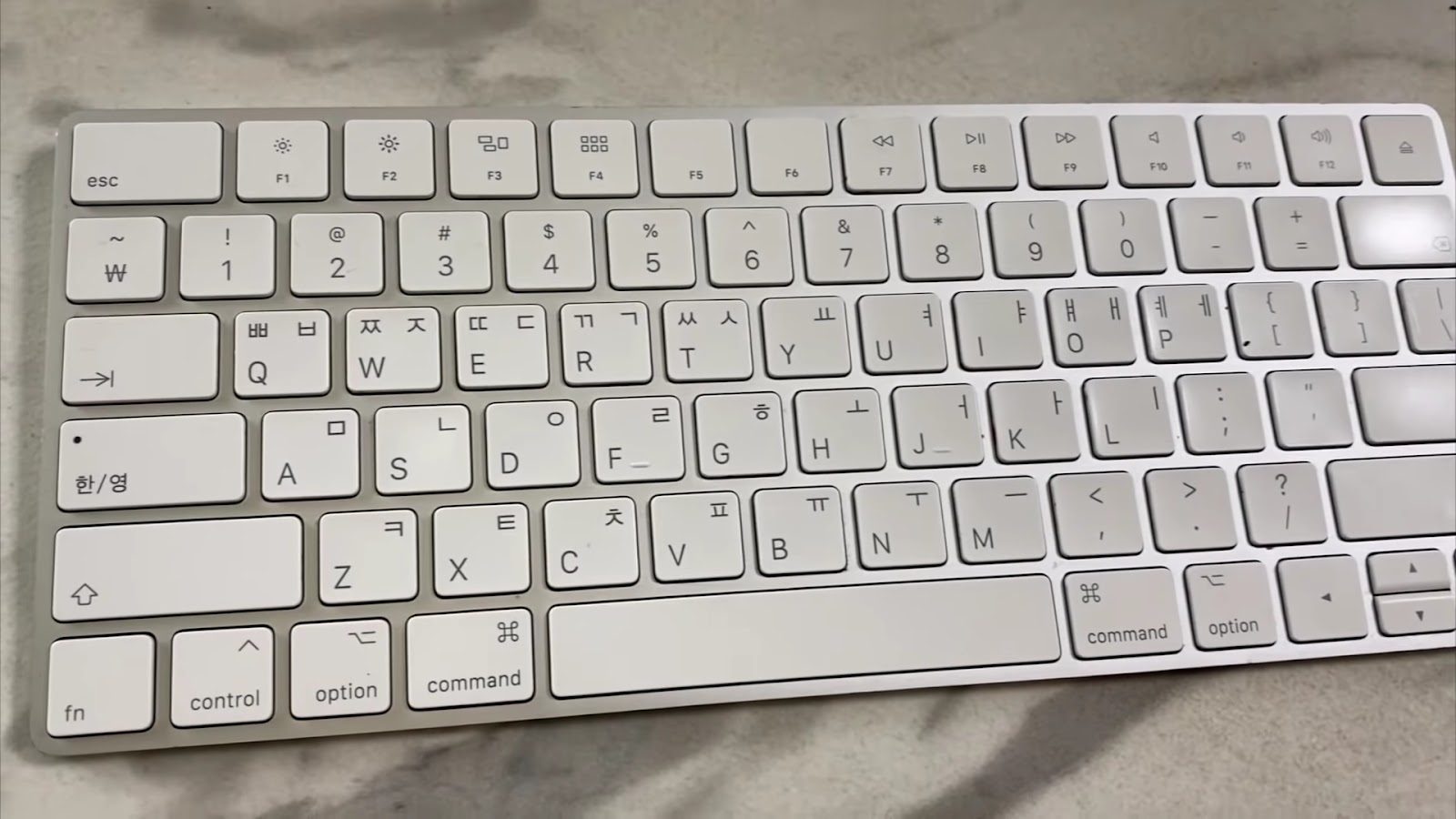Have you ever found yourself enchanted by the elegance of the Korean language, yet daunted by its intricate characters? Unlike the commonly known Latin alphabet, Korean employs Hangul, a distinctive and phonetic script. But fret not, enthusiastic Korean learners! This piece will serve as your roadmap to conquering the Korean keyboard arrangement, granting you access to seamless typing and written correspondence.
Demystifying the Korean Keyboard Layout
The Korean keyboard layout is a specialized tool created with the unique nuances of the Hangul script in mind. Hangul, the standard script for the Korean language, requires a keyboard with a distinct layout as compared to the QWERTY layout familiar to English language users.
The uniqueness of the Korean keyboard layout comes from the need to accommodate the individual Hangul characters or “jamo.” These jamos are then combined to form syllabic blocks that make up words. This remarkable layout allows typing in Korean to be as seamless and efficient as possible.
Here’s what makes the Korean keyboard layout intriguing:
- Ingenious Organization: Unlike the alphabetic arrangement seen in a QWERTY keyboard, the Korean keyboard layout has consonants on the right and vowels on the left;
- Efficient Input: The Korean keyboard is designed for efficiency. The keys are arranged according to their frequency of use in the language;
- Versatility: Beyond Hangul, the Korean keyboard layout also allows for the input of Chinese characters (Hanja), and even has dedicated keys for common punctuation marks in Korean script;
- Ease of Learning: Because of its logical layout, the Korean keyboard is typically easier to learn and master than many other non-Latin language keyboard layouts.
Stay with us as we delve deeper into the specifics of the Korean keyboard layout, and equip you with practical tips to navigate this unique tool. This comprehensive guide will turn your journey of mastering the Korean keyboard layout into an enjoyable learning experience.
Decoding the Korean Keyboard Layout: Key Elements
Hangul and Hanja Characters
The Korean keyboard pleasantly caters to both Hangul and Hanja characters. Hangul refers to the Korean alphabet, while Hanja comprises Chinese characters still occasionally used in Korean literature. The presence of keys for both character sets makes the Korean keyboard versatile, appealing to users across varying levels of language proficiency.
The Two-Set System
Typing in Korean gets simpler with the ingenious two-set system. This feature allows users to switch smoothly between Hangul and Roman alphabets while typing. Such an arrangement removes the need for a separate keyboard when typing in English, making the Korean keyboard a two-in-one tool for bilingual or multilingual users.
Phonetic Arrangement: The “ㄱㄴㄷㄹ” Order
Standard Korean keyboards exhibit a unique arrangement of Hangul characters, resonating with their sequential phonetic sounds. This distinctive order, referred to as “ㄱㄴㄷㄹ” (g/n/d/r) order, echoes the primary consonant sounds in Hangul. This logical structure makes it easier for new learners to grasp the keyboard layout quickly.
Special Keys On The Korean Keyboard
The Korean keyboard is not just a language tool but a cultural representation. It includes special keys dedicated to commonly used Korean symbols, punctuation marks, and provisions for typing complex characters. Among these special keys, you’ll find:
- Consonant/Vowel Keys: These keys represent primary consonant and vowel sounds that combine to form syllabic blocks in Hangul;
- Shift Keys: These are used to modify the characters or symbols typed;
- Modifier Keys: They facilitate the typing of complex characters, such as the double consonants or compound vowels in Hangul.
Mastering these key features of the Korean keyboard can significantly enhance the typing experience, making it simpler, faster, and more enjoyable.
Tip: To make the most of these features, try to familiarize yourself with the Hangul alphabet and basic Korean syllabic blocks before starting to practice on the keyboard. This understanding can significantly shorten your learning curve.
Mastering Hangul Typing on the Korean Keyboard
Crafting Hangul texts on a Korean keyboard is a nuanced process. It involves creating “syllabic blocks”—combinations of consonants and vowels—that together form Hangul characters. Each syllabic block typically begins with a consonant, followed by a vowel. Additional consonants may follow per the requirements of the character.
The beauty of Hangul lies in its simplicity and logic. The Korean language has a limited set of consonants and vowels, which, when arranged in different sequences, shape a tremendous range of characters. This system allows users to swiftly construct Hangul characters using a minimal number of keystrokes.
Tip: To become proficient in typing Hangul, practice forming basic syllabic blocks first. Familiarize yourself with the initial consonant-vowel pairs before moving onto more complicated characters. This progressive approach will improve your Hangul typing speed and accuracy.
Advantages of the Korean Keyboard Layout
The Korean keyboard layout offers a list of benefits that enhance its value to a wide range of users.
Streamlined Typing
The layout’s architecture is shaped around Hangul’s unique characteristics, ensuring efficiency and speed for native Korean speakers. This thoughtful design enables users to type faster, minimizing unnecessary keystrokes and reducing fatigue.
Seamless Language Transition
The two-set system embedded in the Korean keyboard layout lends itself to bilingual or multilingual users. With a simple toggle, users can effortlessly switch between Hangul and Roman alphabets, facilitating a smooth transition between languages while typing.
Incorporating Hanja Elements
The Korean keyboard layout preserves a portal to the past with the inclusion of Hanja characters. These traditional Chinese characters, while less commonly used in modern Korean texts, enrich the language by providing depth and complexity. Users can draw upon this Hanja resource to lend a traditional flavor to their texts or clarify meanings.
Ultimately, understanding these core benefits of the Korean keyboard layout can reveal its sophistication, versatility, and underlying elegance. It serves as a practical tool for those aspiring to master the Korean language or enhance their existing Korean typing skills.
Conclusion
In conclusion, embracing the beauty of the Korean language is not limited by the complexity of its characters. With Hangul as a unique and phonetic system, aspiring learners can confidently navigate the Korean keyboard layout, paving the way for effortless typing and effective written communication. The journey to mastering Korean is an enriching experience that opens doors to new cultural connections and linguistic appreciation.



